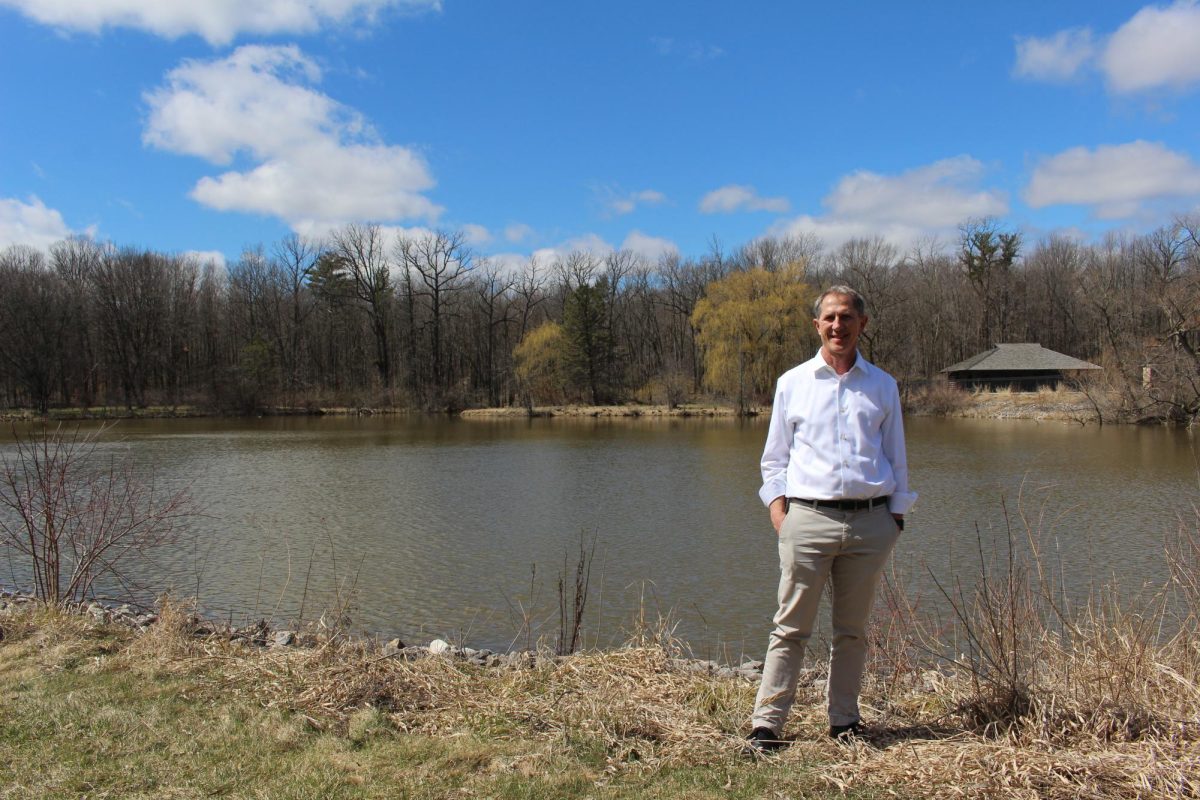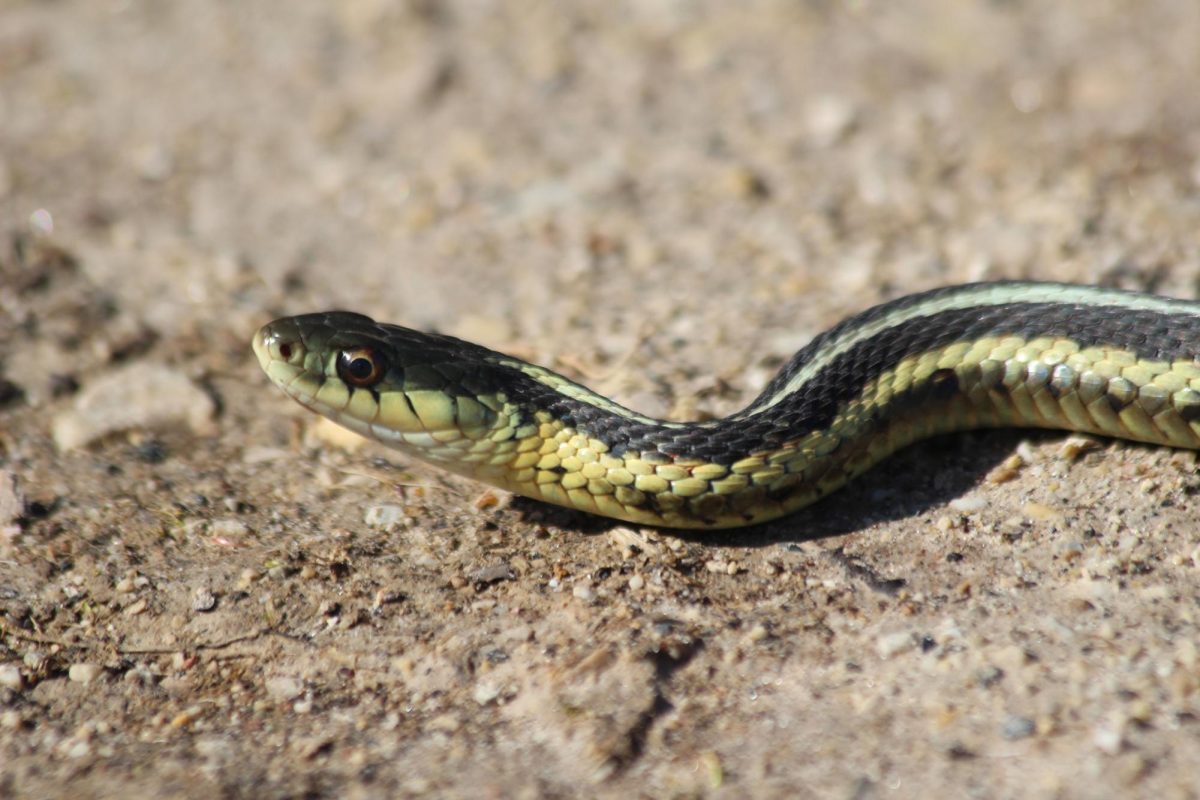Lakeland University consists of approximately 250 acres, most of which are natural areas like Grether Woods, a rich and diverse ecosystem that is home to a variety of wildlife. Paul Pickhardt, Dean of J. Garland Schilcutt School of Business, Science and Technology, is also a professor of Biology at Lakeland and provided an overview of the wide range of inhabitants that can be found on campus. Aside from discussing the ecosystem and biodiversity, Pickhardt also addresses ongoing challenges, such as the presence of the emerald ash borer (EAB) and emphasizes the importance of environmental conservation among students and faculty.
A captivating assortment of up to 12 different tree species are native to the area around Lakeland’s campus. Among these are maple and oak trees, with silver maples located behind Ley Chapel as well as cottonwoods, aspens and willows around the wetland areas. A variety of northern red oak and white oak can be found in the wooded areas along with pine and conifer trees including locusts and ironwoods. However, the sugar maple, Wisconsin’s state tree, dominates the expanse of Grether Woods.
Pickhardt expanded on the slow-growing tree that can live 150 to 200 years, detailing that the highly valued timber can be used for hardwood floors, furniture, or cutting boards. In autumn, the sugar maple displays a distinctive, fire-red color prior to losing its leaves before winter. Not only is the tree a state symbol, but it is also a producer of maple syrup. Pickhardt experienced the process of collecting sap while growing up and continues this activity at Maywood environmental park where sap is boiled down to make syrup.
Due to the large number of trees, various animals have plenty of natural habitats and food sources. Lakeland’s campus attracts wildlife, including squirrels, deer, bats and muskrats. The area is sometimes inhabited by large predators such as the great horned owls, bald eagles and occasionally coyotes. However, Pickhardt’s most popular residents are its birds.
“There are 50 to 60 species of birds in Grether Woods, and in a couple of weeks we can see up to 80 or 90,” Pickhardt said. With spring coming, migratory birds such as rose breasted grosbeak and orioles are passing through, while the common geese, herons, wood ducks and even merganser ducks will return and can be spotted on Lakeland’s ponds.
Aside from migrating birds, the natural inhabitants of the area consist of woodpeckers, such as the downy, hairy and the “heard-but-not-often-seen”, pileated woodpecker. Lakeland is home to a variety of sparrows, juncos, black-capped chickadees, cardinals and bluejays. Located behind Chase, Pickhardt has a bird feeder where he can birdwatch from his office.
During the interview, birds of all kinds, including finches, mourning doves and sparrows gathered around the feeder. “I fill it [the bird feeder] every day and it’s emptied every day,” Pickhardt said. He noted that the feeder is located where it can be viewed in Chase’s sitting area if there were any interested observers.
Despite the large variety of birds, Pickhardt has a favorite: the red-breasted nuthatch. “There are bigger and more grandiose birds,” he explained, “but they’re [the red-breasted nuthatch] really cute.” At that moment while looking in the direction of the flocking birds, Pickhardt spotted one perched on the shepherd’s hook of his bird feeder. Excitement swept through his office as soon as he pointed out the bird. “I don’t think I’ve seen one in a week or two. It’s pretty awesome that it came right when I said it.”
With his natural love of nature and animals, Pickhardt also emphasized the challenges that threaten the ecosystem. One of which is the emerald ash borer (EAB), an attractive, green beetle native to Asia that spread across North America feasting on ash trees. The mature EAB burrows and lays eggs underneath the bark, and when the eggs hatch the larvae excavate, feeding on the galleries which cut the flow of nutrients. Since the exotic beetle doesn’t have a native predator in the country, it has thrived the past 18 years with the first major outbreak infecting about 15,000 trees by River Edge with its arrival in Wisconsin through the Upper Peninsula, Michigan and Illinois.
At Lakeland, about 25 to 30% of the trees in Grether Woods are ash, which makes them susceptible to EAB. Due to the infestation, many trees aged 30 to 60 years have been cut down on campus, including those in front of Chase, behind the chapel and around the library. “There are many advantages to having a healthy tree population. I’d like to see dozens or hundreds of more trees,” Pickhardt said. “It’d be really nice to replace a lot of the tree habitat lost in the last two to three years.” Thankfully, the landscaping crew has been working hard to replace them along with the support of a generous donor. Pickhardt explained that unless these trees are chemically treated, they will die. Wisconsin has about 770 million ash trees, and the EAB infestation will have a devasting effect on the state’s forests and habitats.
Addressing the question of how students and faculty can contribute to environmental preservation on campus, Professor Pickhardt offers valuable insights and practical suggestions. He emphasizes the importance of simple yet impactful actions, such as:
- Pick up garbage or trash around campus.
- Properly dispose of cigarette butts, vapes or cartridges to prevent toxic chemicals and pollutants from contaminating the ecosystem.
- Maintain vehicles to ensure they are leak-free of harmful substances like oils, antifreeze, and gasoline.
- Use environmentally safe ice melts that are magnesium and calcium based as rock and road salt can damage plants and ponds on campus.
- Reduce waste through compost initiatives, encourage organic recycling and minimize environmental footprints to sustain waste management.
- Use reusable alternatives instead of single-use plastics, such as water bottles and containers.
Lakeland is a rich tapestry of biodiversity, from the majestic sugar maples to the diverse array of birds and wildlife, the campus is a haven for nature lovers and a flourishing ecosystem abundant with life. As Pickhardt recognizes the responsibility of safeguarding the environment, it rests not only on dedicated individuals like himself but also on every member of the campus community. As we navigate the challenges ahead, let us remain steadfast in our commitment to protecting and nurturing Lakeland’s ecosystem for generations to come.



